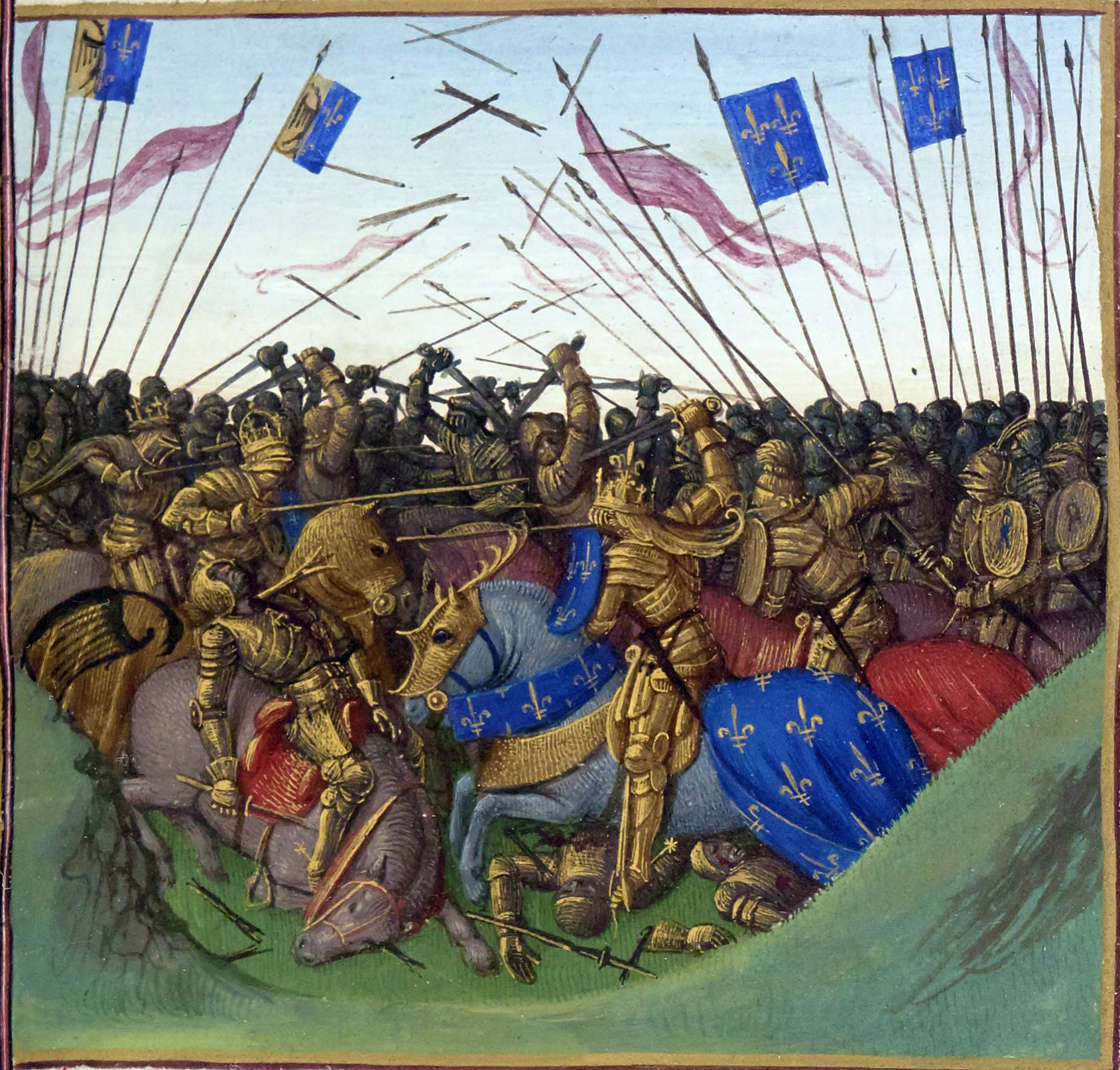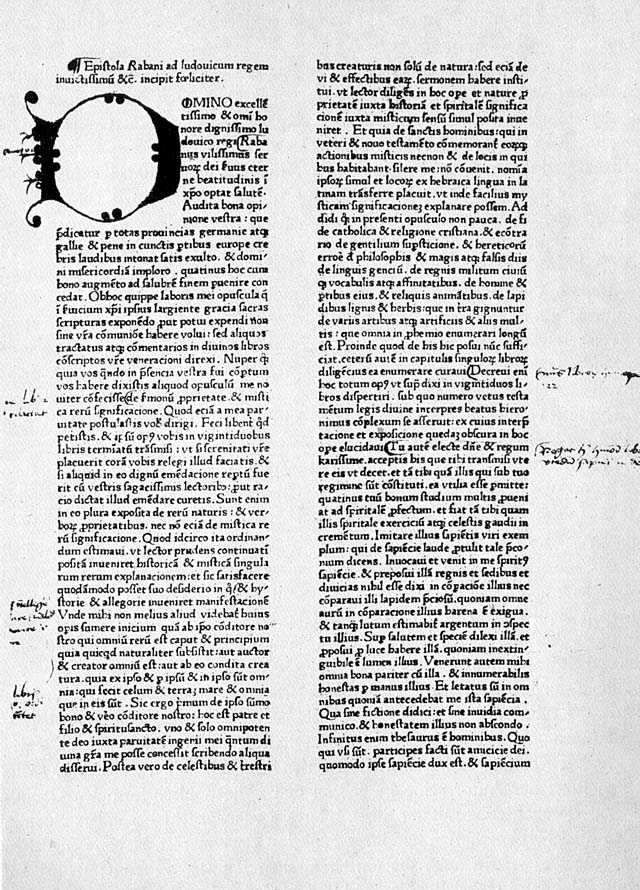|
Battle Of The Ries
The battle of the Ries of 13 May 841 was a major engagement of the Carolingian civil war of 840–843. King Louis the German surprised and routed the army of Count Adalbert of Metz (died 841), Adalbert of Metz on the banks of the river Wörnitz (river), Wörnitz in the Nördlinger Ries, Ries. Adalbert, who had been charged by the emperor Lothar I with preventing Louis from breaking out of Duchy of Bavaria, Bavaria, was killed in the fighting. The victory allowed Louis to join up with King Charles the Bald and defeat Lothar in the battle of Fontenoy-en-Puisaye in late June. Background The battle of the Ries is recorded in many sources: the ''Annales Bertiniani'', ''Annales Fuldenses'', ''Annales Iuvavenses'' and ''Auctarium Garstense'', the Grimalt Codex, the ''Casus sancti Galli'' of Ratpert of Saint Gall, Ratpert and the ''Historiae'' of Nithard. In early 841, Lothar I forced Louis the German to retreat into Bavaria. He stationed a large army in Alemannia to block the Roman roads ... [...More Info...] [...Related Items...] OR: [Wikipedia] [Google] [Baidu] |
Carolingian Civil War
The Carolingian civil war was a violent crisis over the succession to the Carolingian Empire following the death of Emperor Louis the Pious in June 840 and lasting until the Treaty of Verdun in August 843. Louis's eldest son, the emperor Lothar I, laid claim to an undivided empire, while his younger brothers Louis the German and Charles the Bald sought large kingdoms of their own on the basis of previous divisions planned by the late emperor. Their nephew, Pippin II, laid claim to Aquitaine. After Louis the Pious's death, Lothar moved immediately to disregard the division of the empire and secure for himself his father's imperial position. He reached out to Pippin in Aquitaine for support against Charles. Not content with Bavaria alone, Louis the German occupied the Rhineland laying claim to all of Germania. The first military move of the budding civil war was Lothar's campaign that forced Louis from the Rhineland in August. It increased Lothar's prestige in the east, but ended in ... [...More Info...] [...Related Items...] OR: [Wikipedia] [Google] [Baidu] |
Precaria
The precarium (plural precaria)—or precaria (plural precariae) in the feminine form—is a form of land tenure in which a petitioner (grantee) receives a property for a specific amount of time without any change of ownership. The precarium is thus a free gift made on request (or ''precarius'', whence "prayer") and can be revoked. The grantor can reclaim the land and evict the grantee at any time, and the grantee's hold on the land is said to be "precarious". (The adjectival form "precarial" is also used.) The precarium arose in the late Roman Empire. In the Middle Ages it became a legal fiction, and the two parties usually signed a contract specifying the rent or services owed by the petitioner. Some precaria eventually became hereditary fiefs. In the Merovingian period the feminine form (singular ''precaria'') became common, but in the eighth century the term '' beneficium'' began to replace ''precarium'', although the institutions were practically identical. Ecclesiastical us ... [...More Info...] [...Related Items...] OR: [Wikipedia] [Google] [Baidu] |
Abbey Of Fulda
The Abbey of Fulda (; ), from 1221 the Princely Abbey of Fulda () and from 1752 the Prince-Bishopric of Fulda (), was a Order of Saint Benedict, Benedictine abbey and Hochstift, ecclesiastical principality centered on Fulda, in the present-day German state of Hesse. The monastery was founded in 744 by Saint Sturm, a disciple of Saint Boniface. After Boniface was buried at Fulda, it became a prominent center of learning and culture in Germany, and a site of religious significance and pilgrimage through the 8th and 9th centuries. The ''Annals of Fulda'', one of the most important sources for the history of the Carolingian Empire in the 9th century, were written there. In 1221 the abbey was granted an imperial estate to rule and the abbots were thereafter princes of the Holy Roman Empire. In 1356, Emperor Charles IV, Holy Roman Emperor, Charles IV bestowed the title "Archchancellor of the Empress" () on the prince-abbot. The growth in population around Fulda resulted in its elevation ... [...More Info...] [...Related Items...] OR: [Wikipedia] [Google] [Baidu] |
Rohrbach, Birkenfeld
Rohrbach () is an ''Ortsgemeinde (Germany), Ortsgemeinde'' – a Municipalities of Germany, municipality belonging to a ''Verbandsgemeinde'', a kind of collective municipality – in the Birkenfeld (district), Birkenfeld Districts of Germany, district in Rhineland-Palatinate, Germany. It belongs to the Baumholder (Verbandsgemeinde), ''Verbandsgemeinde'' of Baumholder, whose seat is in the Baumholder, like-named town. Geography Location The municipality lies on the like-named Rohrbach south of the Nahe (Rhine), Nahe at the foot of the 548.5 m-high Wüschberg. Neighbouring municipalities Rohrbach borders in the north on the municipality of Berglangenbach, in the east on the municipalities of Fohren-Linden and Berschweiler bei Baumholder, in the south on the municipality of Freisen in the Saarland and in the west on the municipality of Rückweiler. History Names The villages of Rohrbach, Rückweiler, Hahnweiler and Leitzweiler bear the tag ''Auf der Heide'', although it is unc ... [...More Info...] [...Related Items...] OR: [Wikipedia] [Google] [Baidu] |
Hrabanus Maurus
Rabanus Maurus Magnentius ( 780 – 4 February 856), also known as Hrabanus or Rhabanus, was a Frankish Benedictine monk, theologian, poet, encyclopedist and military writer who became archbishop of Mainz in East Francia. He was the author of the encyclopaedia ''De rerum naturis'' (''"On the Natures of Things"''). He also wrote treatises on education and grammar and commentaries on the Bible. He was one of the most prominent teachers and writers of the Carolingian age, and was called "Praeceptor Germaniae", or "the teacher of Germany". In the most recent edition of the Roman Martyrology ('' Martyrologium Romanum'', 2004, pp. 133), his feast is given as 4 February and he is qualified as a Saint ('sanctus'). Life Rabanus was born of noble parents in Mainz. The date of his birth remains uncertain, but in 801 he was ordained a deacon at Benedictine Abbey of Fulda in Hesse, where he had been sent to school and had become a monk. At the insistence of Ratgar, his abbot, he went ... [...More Info...] [...Related Items...] OR: [Wikipedia] [Google] [Baidu] |
Pippin II Of Aquitaine
Pepin II, called the Younger (823 – after 864 in Senlis), was King of Aquitaine from 838 as the successor upon the death of his father, Pepin I. Pepin II was eldest son of Pepin I and Ingeltrude, daughter of Theodobert, count of Madrie. He was a grandson of the Emperor Louis the Pious. Life Pepin was elected king upon his father's death by the nobles of Aquitaine who were keen to establish their independence from the Empire. However, his grandfather Louis the Pious had appointed his son Charles the Bald, Pepin's uncle who was about the same age, as King of Aquitaine in 832 when he (nominally) dispossessed Pepin's father Pepin I, and eventually contested the kingship on Pepin I's death in 838. Pepin had thereafter been at war with his half-uncle Charles. Louis the Pious fully disinherited him at Crémieu and then at Worms in two subsequent divisions of the empire. Louis demanded the Aquitainians send Pepin to Aachen to learn the ways of good governance, which they refused. ... [...More Info...] [...Related Items...] OR: [Wikipedia] [Google] [Baidu] |
Cavalry Charge
A charge is an offensive maneuver in battle in which combatants advance towards their enemy at their best speed in an attempt to engage in a decisive close combat. The charge is the dominant shock attack and has been the key tactic and decisive moment of many battles throughout history. Modern charges usually involve small groups of fireteams equipped with weapons with a high rate of fire and striking against individual defensive positions (such as a concertainer or bunker), instead of large groups of combatants charging another group or a fortified line. Ancient charges It may be assumed that the charge was used in prehistoric warfare, but clear evidence only comes with later literate societies. The tactics of the classical Greek phalanx included an ordered approach march, with a final charge to contact. Highland charge In response to the introduction of firearms, Irish and Scottish troops at the end of the 16th century developed a tactic that combined a volley o ... [...More Info...] [...Related Items...] OR: [Wikipedia] [Google] [Baidu] |
Vegetius
Publius (or Flavius) Vegetius Renatus, known as Vegetius (), was a writer of the Later Roman Empire (late 4th century). Nothing is known of his life or station beyond what is contained in his two surviving works: ''Epitoma rei militaris'' (also referred to as '' De re militari''), and the lesser-known ''Digesta Artis Mulomedicinae'', a guide to veterinary medicine. He identifies himself in the opening of his work ''Epitoma rei militaris'' as a Christian. Dating of work The latest event alluded to in his ''Epitoma rei militaris'' is the death of the Emperor Gratian (383); the earliest attestation of the work is a ''subscriptio'' by Flavius Eutropius, writing in Constantinople in 450, which appears in one of two families of manuscripts, suggesting that a division of the manuscript tradition had already occurred. Despite Eutropius' location in Constantinople, the scholarly consensus is that Vegetius wrote in the Western Roman Empire.Walter Goffart. "The date and purposes of Vegetius ... [...More Info...] [...Related Items...] OR: [Wikipedia] [Google] [Baidu] |
Lech (river)
The Lech (; , ''Licca'') is a river in Austria and Germany. It is a right tributary of the Danube in length with a drainage basin of . Its average discharge (hydrology), discharge at the River mouth, mouth is . Its source is located in the Austrian States of Austria, state of Vorarlberg, where the river rises from lake Formarinsee in the Alps at an altitude of . It flows in a north-north-easterly direction and crosses the German border, forming the Lechfall, a waterfall; afterwards the river enters a narrow gorge (the Lechschlucht). Leaving the Alps, it enters the plains of the Allgäu at Füssen at an elevation of in the German state of Bavaria, where it used to be the location of the boundary with Swabia. The river runs through the city of Füssen and through the Forggensee, a man-made lake which is drained in winter. Here, it forms rapids and a waterfall. The river flows further northwards through a region called the Lechrain, and passes the cities of Schongau, Bavaria, Sch ... [...More Info...] [...Related Items...] OR: [Wikipedia] [Google] [Baidu] |



